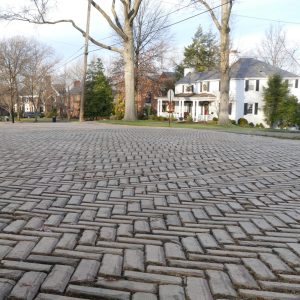pure water on tap
Clean water. It’s something we each take for granted and something Mt. Lebanon has had access to since its incorporation. Pennsylvania American Water has proudly served Pittsburgh’s South Hills communities since 1893, originally as the South Pittsburgh Water Company. Our Hays Mine Water Treatment Plant on Becks Run Road has been pumping water from the Monongahela River continuously since then, with the treatment process and pipe technology evolving over time. We know much more today than we did in the 1800s about how to treat water. In addition, the river’s water quality has improved substantially and water providers are more highly regulated by county, state and federal agencies than ever before. The result is clean, reliable drinking water available 24/7, all for about a penny a gallon.
When tragedies like the recent lead crisis in Flint Michigan occur, customers may have questions or concerns about what comes out of their tap. According to Pennsylvania’s Department of Health, the primary source of childhood lead poisoning in Pennsylvania continues to be exposure to aging, deteriorating lead-based paint (chips and dust), and not drinking water. Pennsylvania American Water regularly tests for lead in drinking water. Testing has shown that lead is not present in the water exiting any of our water treatment facilities, including the Pittsburgh facility that serves Mt. Lebanon. The company conducts tests in our distribution systems in accordance with the EPA’s regulatory requirements, which locally includes the collection of 50 samples from customers’ properties in our Greater Pittsburgh service area.
Pennsylvania American Water’s most recent lead sampling and analysis were taken in 2013 on the finished/treated and sampled water. The results of these tests were well within the compliance regulations. EPA requires lead and copper tests every three years, and we are scheduled to take the next set of samples during the third quarter of 2016. Although these tests indicate that lead is not present in our treated water, lead or copper levels in some homes and businesses might be detected due to customer use of lead pipes, lead solder and brass or molded metal faucets in household plumbing.
Pennsylvania American Water takes steps to reduce the potential for lead to leach from your pipes into the water. The company has used corrosion control treatment methods for more than 30 years and during that same time period our finished, and sampled water, has always been in compliance with regulatory standards.
You might have lead in your drinking water if your household plumbing system has lead pipes or if lead solder was used in the joints of copper pipes. Homes built before 1930 are more likely to have lead plumbing systems. Lead pipes are a dull grey color and scratch easily revealing a shiny surface. Lead solder used to join copper pipes is a silver or grey color. There are lead kits available at some local hardware stores that can be used to test for the presence of lead in solder. If your house was built before January 1986, you are more likely to have lead-soldered joints. If you do, the chance of the lead leaching into your drinking water is greater when water has been standing in the pipes for many hours, overnight for example.
Certain home treatment devices, such as water softeners for example, might increase lead levels in your water. Always consult the device manufacturer for information on potential impacts to your drinking water or household plumbing. In addition, if grounding wires from electrical systems are attached to household plumbing, corrosion and lead exposure may be greater. Customers can choose to pay to have an electrician check the house wiring. There are fees to have the evaluation performed.
You cannot see, smell or taste lead, and boiling water will not remove lead. Although our water is treated to minimize the risk of lead, you can reduce your family’s exposure to lead in drinking water by following these few simple steps:
- Flush your tap before drinking or cooking with water, if the water in the faucet has gone unused for more than six hours. The longer the water lies dormant in your home’s plumbing, the more lead it might contain. Flush your tap with cold water for 30 seconds to two minutes before using. To conserve water, catch the running water and use it to water your plants.
- Try not to cook with or drink water from the hot water faucet. Hot water has the potential to contain more lead than cold water. When you need hot water, heat cold water on the stove or in the microwave.
- Remove loose lead solder and debris from plumbing. In newly-constructed homes or homes in which the plumbing was recently replaced, remove the strainers from each faucet and run the water from 3 to 5 minutes. When replacing or working on pipes, be sure to use materials that are lead-free. Use of lead-based solders have been illegal in Pennsylvania since 1991.
- If you are still concerned about elevated levels and want to find out where you can have your water tested by a certified laboratory, contact the EPA’s Safe Drinking Water Act Hotline at 1-800-426-4791 or visit the Pennsylvania Department of Environmental Protection’s website at www.dep.state.pa.us.
Ronald G. Bargiel is Water Quality Manager, Environmental Management and Compliance, Pennsylvania American Water
Mt. Lebanon resident Josephine Posti is Senior External Affairs Specialist, Pennsylvania American Water





